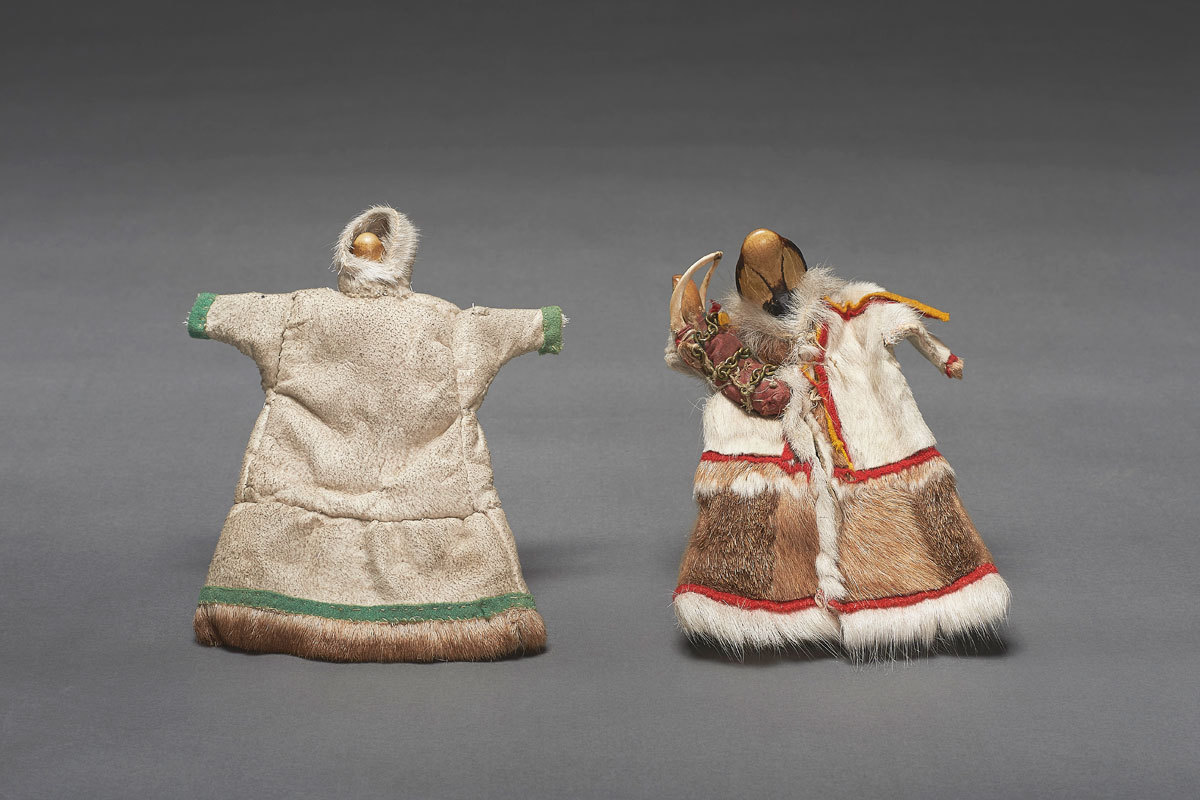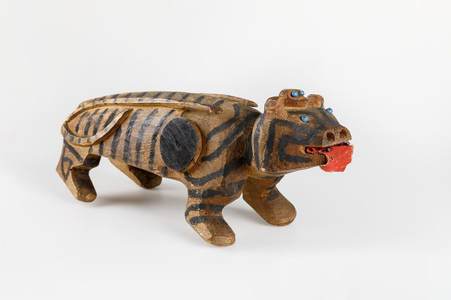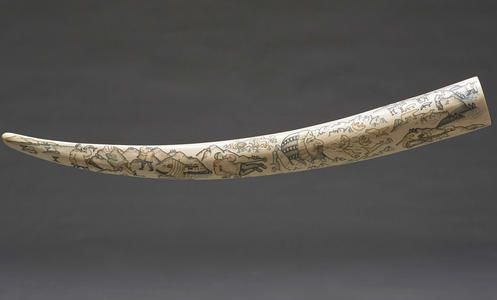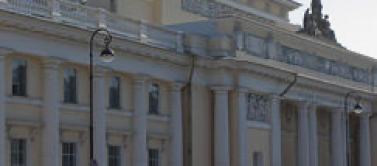Collections on the culture of peoples of Siberia and Far East

The collection on the culture of 44 indigenous minorities of Siberia, Far East, and peoples of neighboring territories numbers about 60,000 exhibits and 25,000 photos of the late 19th – early 21st century. Of these, over 4,000 are objects on the Buryats, slightly less on the Evenki, within 2,000 on the Tuvans, Yakuts, Chukchi, Nanais, Nenets, Khanty, Mansi, Koryaks, Evens, Nivkhs, and Altaians, including their geographic groups singled out by the 2010 census as separate ethnicities (Telengits, Teleuts etc.). Small but valuable collections (200 to 800 exhibits) characterize the culture of the Nganasans, Eskimos, Aleutians, Yukagirs, Negidals, Dolgans, Ket, Selkup, Udege, Oroch, Uilta (Oroks), Itelmens, and Shors. In the collections on neighboring countries’ peoples, a large portion of items (about 3,000) were collected from the Ainu of Sakhalin and Hokkaido, Japan; over 2,000 from Mongols, over 1,000 from Chinese and Koreans, and about 1,000 from Japanese.
Thematically, the collections present quite amply Shamanism of Siberian peoples, traditional beliefs, Lamaism and everything related to it, utensils, everyday, festive and ritual garments, and means of transport. Impressive by their scope and content are figurines of walrus tusk, mammoth tusk, and mouflon horn, and walrus tusks with narrative color engraved drawings created by talented, sometimes unknown Chukchi and Eskimo craftsmen in the 1930–2000s.
The foundation of the collection on the culture of indigenous Siberian peoples was laid in the 1st third of the 20th century. Considering Siberia’s remoteness and inaccessibility, the Russian Museum’s Ethnographic Department and its head D. A. Klemenz who supervised the Siberian region, correspondents were engaged in acquisition of artifacts. The Museum’s first collection characterizing the Evenki culture and registered in 1902 under No. 1 was received from the administrator of Chekur township, Olyokminsk District, Yakutsk Oblast. By Klemenz’s assignment, artifacts were acquired among the Yakuts and Evenki in that vast territory by A. I. Popov, councilor of Yakutsk Oblast administration, and political deportees E. K. Pekarsky and V. M. Ionov.
Active contributions to building the collections on the peoples of Chukotka, Kamchatka and the Commander Islands were made by State Councilor N. P. Sokolnikov, governor of Anadyr District, Maritime Province; G. A. Borisov, director of mining in the Chukotka Peninsula, North-Eastern Siberian Company; and K. D. Loginovsky, deputy governor of Petropavlovsk District and member of the organizing committee of the Society for Studies of Amur Land.
Of earlier collections on the Koryaks, Evens, and Kamchadals, but registered later, the collection of Dr. N. V. Slyunin, participant of the 1896–1898 Okhotsk-Kamchatka expedition, is interesting. Under the instructions of ED, acquisitions in the Far East and neighboring territories were made by full members of the Imperial Russian geographical society, wild game manager and geographer D. K. Solovyov, ethnographer and folklore researcher V. N. Vasiliev, and explorer, ethnographer and writer V. K. Arsenide.
The greatest contribution to the acquisitions for collections on the Evenki of East Siberia, Baikal Land and Trans-Baikal, especially on shamanism, in the early 20th century was made by ethnographer and folklore expert A. A. Makarenko, former political deportee and later a Museum employee; Siberian peasant P. T. Voronov; railway engineer E. V. Bliznyak, Director of Ob’-Yenisei Waterway; and author and statistician, prominent public figure D. M. Golovachev. The latter also managed to gather a valuable collection on the Selenga Buryats.
The main collectors on the Buryats, in particular of cult objects, in the first decade of the 20th century were teacher M. N. Khangalov and prominent orientalist and philologist Ts. Zh, Zhamtsarano. The theme of Buddhism in its lamaist form is also presented in two small but important collections of Prince E. E. Ukhtomsky, and later of his son D. E. Ukhtomsky.
The process of penetration of Buddhism into West and Mountain Altai where shamanism was widespread is reflected in the collection on the Altaians collected by D. A. Klemenz during his 1904 expedition to that region. An important role in the acquisitions for collections on South Siberian peoples in the early 20th century belongs to A. V. Adrianov, official of the Excise Agency of Irkutsk Province (Altaians, Khakases), and the well-known ethnographer and anthropologist F. Ya. Kohn (Tuvans, Khakases).
In the same period, the collection on the peoples of West and partially East Siberia was built by S. I. Rudenko (Nenets, Khanty, Mansi) and tax inspector and local studies expert P. E. Ostrovskikh (Yenisei Yurak Nenets, Tungus, Nganasans, Yakuts, Dolgans, Evenki, Ket, Selkup).
In the 1920s, acquisitions for the Siberian depository continued. It was a great merit of S. I. Rudenko, head of the Ethnographic Department and curator of Siberian Section IV. From 1923 till 1930, 12 expeditions were conducted (Irkutsk Oblast, Trans-Baikal, Altai, West Siberia, Far East), sponsored both by the Ethnographic Department and by other institutions. The expeditions’ participants were S. I. Rudenko and the Museum’s personnel (A. A. Makarenko, A. P. Barannikova, S. A. Teploukhov, R. P. Mitusova, E. R. Schneider). Typical for all the expeditions were integrated survey of the region and collecting ethnographic, statistical, and anthropological materials.
A major addition to the depository was the collections of the former Museum of the Peoples of the USSR in Moscow transferred to the Museum in 1948. Among them were unique exhibits on the Aleutians and peoples of Kamchatka collected by the well-known researcher V. I. Iokhelson during the 1909–1911 expedition sponsored by arts patron F. P. Ryabushinsky, and F. Ya. Kohn’s collection on shamanism, which he collected in 1903.
In the 1950s, due to preparation of a new exposition and in order to make up the depository, expedition acquisitions were resumed by the Department’s employees N. N. Nikitin (Nenets National District), M. A. Kaplan (Evenki National District, Khabarovsk Krai, Yakut Autonomous Republic), E. P. Orlova (Khabarovsk Krai, Sakhalin Island, Kamchatka), P. I. Karalkin (Tuvan Autonomous Republic, Khakassia, Altai), L. G. Lelchuk (Buryat Autonomous Republic, Yakut Autonomous Republic), and M. S. Popova (Khanty-Mansi Autonomous District).
The 1970–1990s were rather fruitful period of acquisition the depositories on the peoples of Siberia and Far East. The main tasks of expedition acquisitions were determined by preparing the new exposition “Peoples of Siberia and Far East. Late 19th – early 20th century,” collecting exhibits for general-Museum exhibitions on arts and crafts, traditional and modern dwelling, rites and feasts. Considering the Siberia region’s specifics (remoteness and isolation), the Department employees were oriented in their collecting to the integrated and monographic approaches. That period saw the expeditions of the Museum employees: D. A. Sergeyev (1970–1974 – collecting paleoethnographic and ethnographic objects in Chukotka National District), I. V. Kulikova (Chukotka National District), L. A. Fotiy (Evenki National District and Khabarovsk Krai), N. B. Margolina (Khabarovsk Krai, Maritime Krai, Sakhalin Island), L. G. Lelchuk (Yakut Autonomous Republic, Chita Oblast), N. G. Aloeva (Khakas Autonomous Oblast, Tuvan Autonomous Republic and Buryat Autonomous Republic), E. G. Fedorova (Khanty-Mansi National District), V. V. Gorbacheva (Koryak Autonomous District – jointly with M. S. Popova and individually, Chukotka National District), M. S. Popova (Taimyr (Dolgano-Nenets) National District), I. A. Karapetova (Yamalo-Nenets Autonomous District – jointly with V. V. Gorbacheva and individually), K Yu. Solovyova (Khanty-Mansi Autonomous District – jointly with I. A. Karapetova and individually), T. Yu. Sem (Yakut Autonomous Republic, Khabarovsk Krai, Sakhalin Oblast), and S. V. Romanova (Altai Autonomous Oblast, Tuvan Autonomous Republic).
The early 21st century was less fruitful in terms of expedition acquisitions. Expeditions were conducted by the department’s employees V. V. Gorbacheva (Koryak Autonomous District, jointly with French explorers, in 2000 and 2005; Chukotka Autonomous District and Evenki municipal district of Krasnoyarsk Krai, jointly with the Institute of Material Culture History, in 2007, 2008, 2013), I. A. Karapetova (Khanty-Mansi Autonomous District jointly with K. Yu. Solovyova, Yamalo-Nenets Autonomous District), M. V. Fedorova and S. V. Romanova (Republic of Sakha (Yakutia), Aginsk Autonomous District), M. V. Fedorova and N. A. Kossyak (Republic of Buryatia), S. V. Romanova and E. A. Andreeva (Republic of Tuva), and E. A. Andreeva (Krasnoyarsk Krai). In the recent decade, the acquirements for collections in the Siberian region on the indigenous peoples of Siberia and the Far East have been much restricted due to cut funding, except for rare exhibit purchases via the RME expert board for depository purchasing.
The existing collection on the culture of indigenous peoples of Siberia, Far East and neighboring territories is of great interest not only for Russian researchers and experts, but also for foreign museum workers, researchers and ecologists dealing with matters of ethnogenesis, ethnic history and man’s adaptation to harsh climatic conditions of the Extreme North and the Arctic Zone of the RF.







